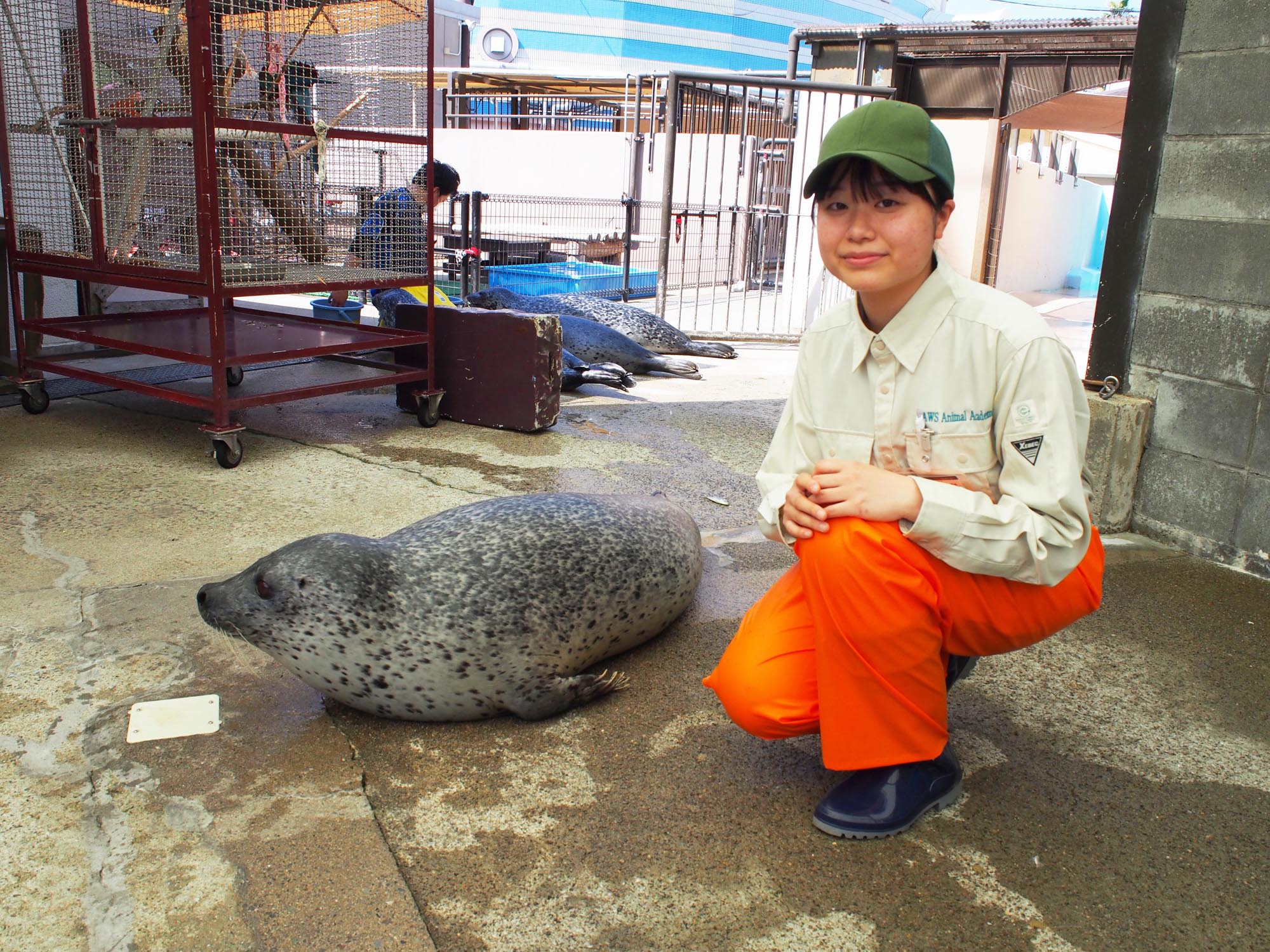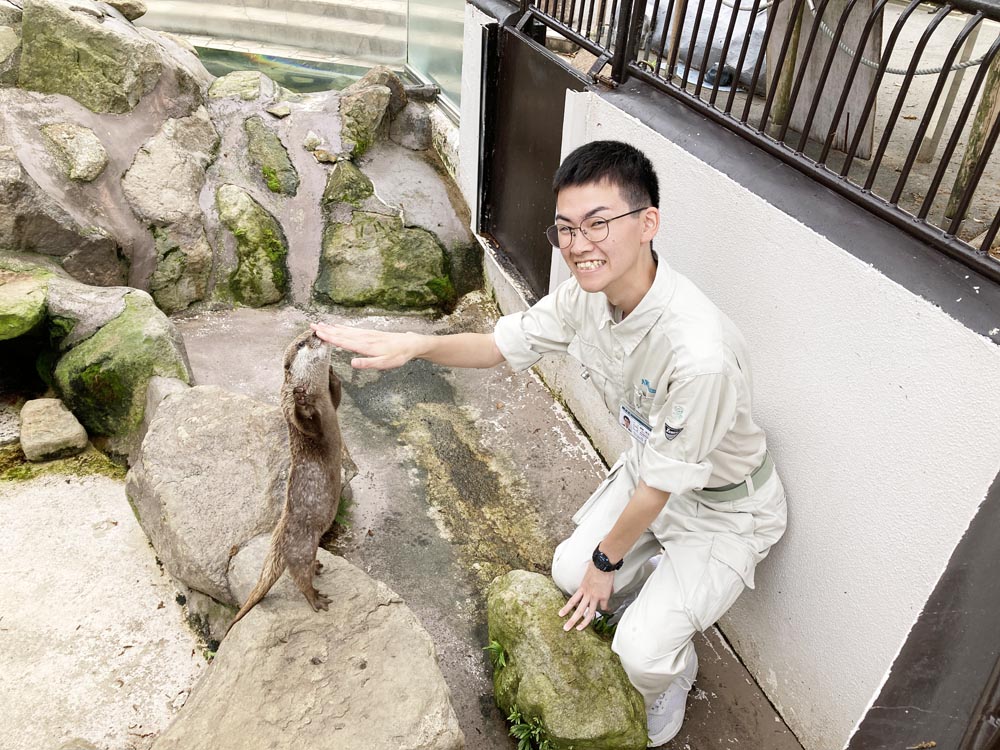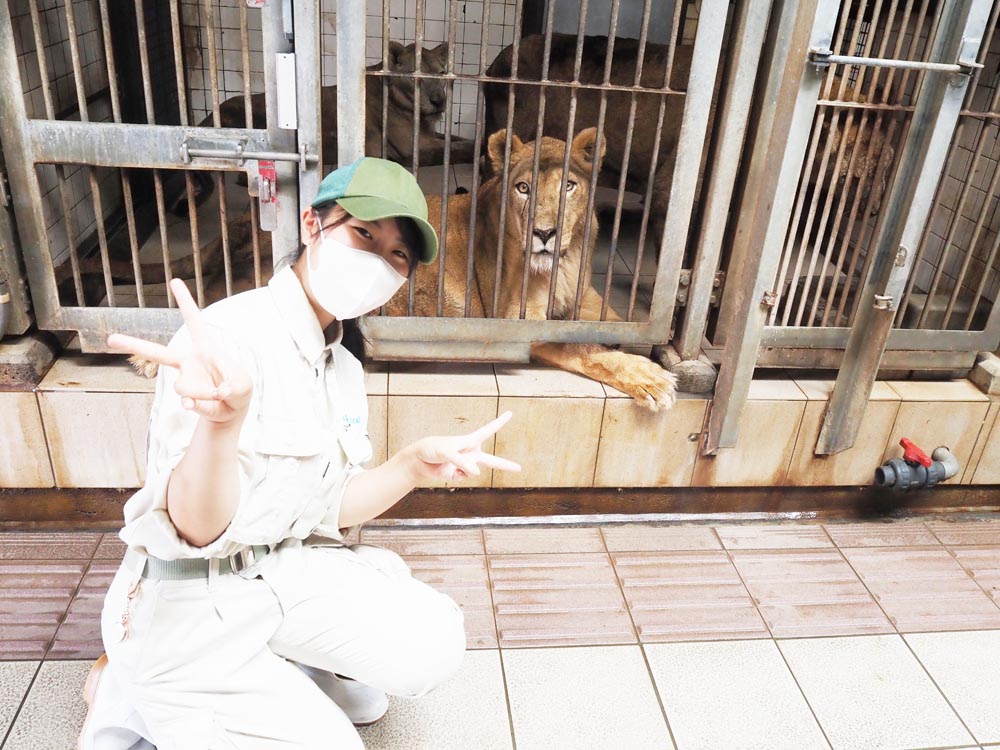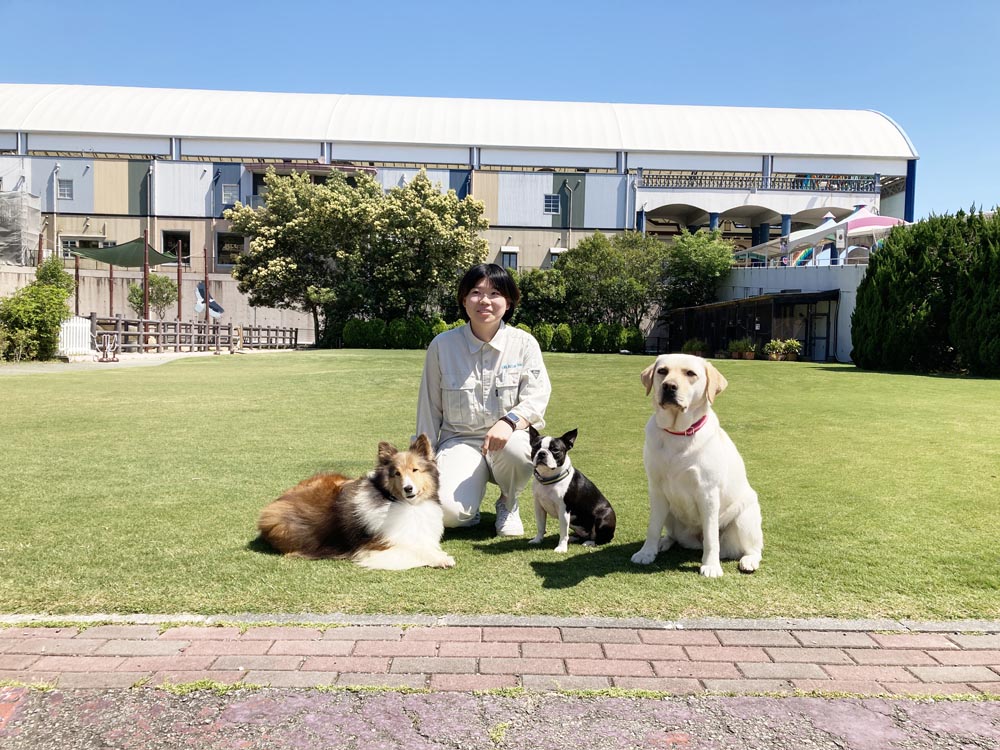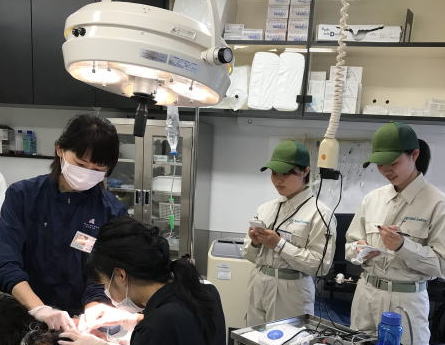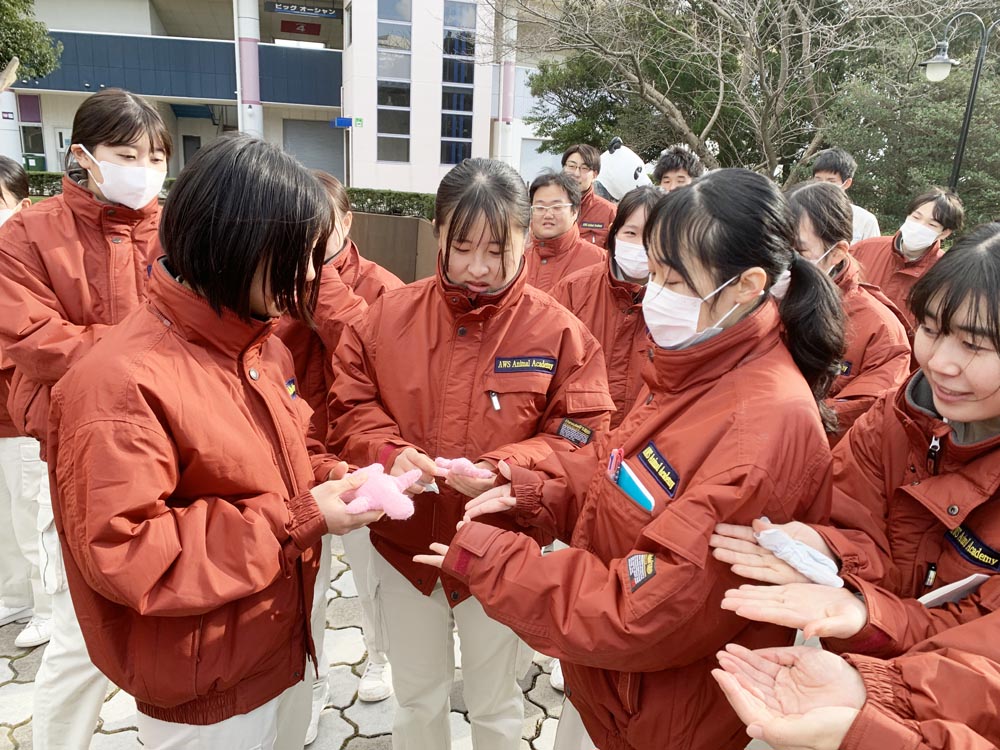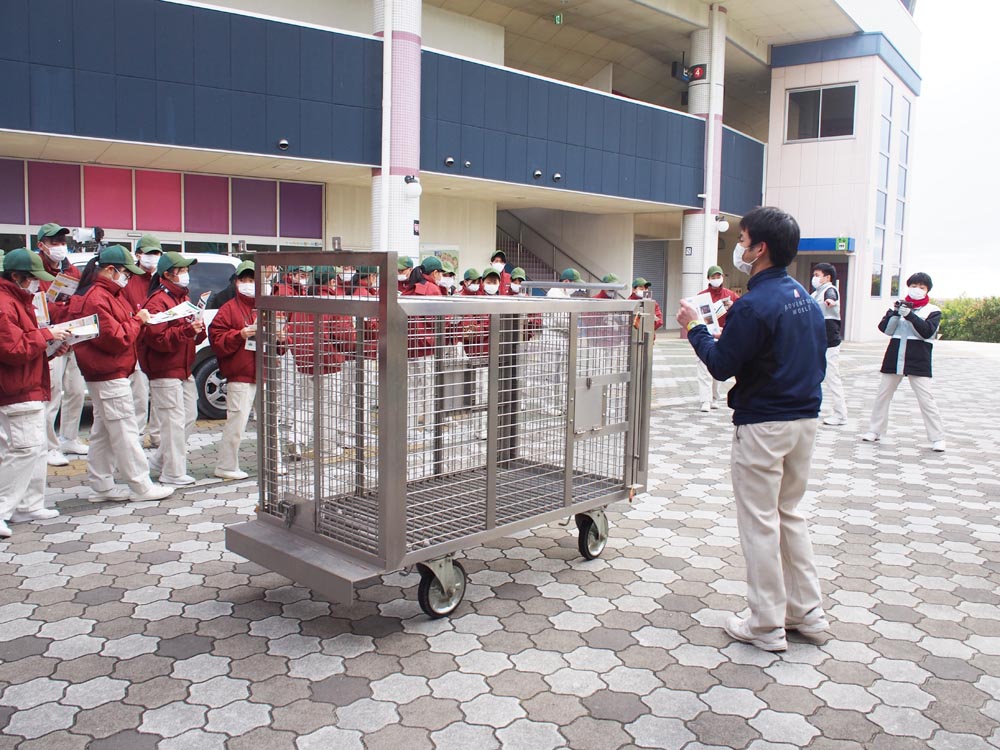Department of Wildlife Management
At Adventure World, which serves as the campus field for practical training, research is conducted on the breeding and reproduction of numerous wild animals, including rare animals. The Academy aims to provide students with real knowledge, experience, and skills through more than 300 hours of practical training per year (in the first year of the Wildlife Management course).
Experienced staff members in charge of various animals at Adventure World provide direct guidance on techniques and knowledge gained from their real-life experience so that students can acquire the skills to be immediately effective in the field of working with wild animals.
1st year Basic Practice
-
Cetaceans
We will mainly work with cetaceans (bottlenose dolphins, bottlenose dolphins, and Pacific white-sided dolphins, etc.). There will be training and live viewing of the ministry.
-
pinnipeds (seals and walruses)
We will mainly work with pinnipeds (sea lions and seals) and animals appearing in Animal Action. Let's also observe the backstage of the live action☆.
-
kaiju-kan (combination of Japanese puppet theater and Japanese puppet theatre)
Mainly in charge of penguins.
The number of penguin species and birds is one of the best in Japan. -
open space for people to get together and interact (e.g. in a playground, etc.)
Fureai Plaza and Bird Paradise are in charge of practical training. Animal species in charge vary from small animals to specific animals. Let's go find your favorite!
-
family square (e.g. open-air market)
Horses, miniature horses, and red pandas are in charge of practical training. They are also challenged to grasp many types of hay and to make food.
-
Herbivore Zone
I am in charge of the herbivore zone in Safari World. We also study large herbivores (giraffes and rhinos).
-
Carnivore Zone
The Carnivore Zone in Safari World is in charge. You will practice your skills in a surveillance jeep and a housing facility. You may be surprised to hear loud noises right in front of you.
-
Doggie Garden
We are primarily responsible for canines. We have many species, so let's get to know their characteristics and personalities!
Let's learn more about training and first aid *. -
veterinary hospital
Practical training in a veterinary hospital is your responsibility. You will work with veterinarians on treatments and physical examinations. You will also assist in the preparation of medications for the animals.
In the first year, students rotate through 9 training sites for a set period of time.
After experiencing all of the training sites, students decide on their specialized training sites for the second year.
2nd Year Specialty Practice
Each theme is focused on, and throughout the year, specialized and practical hands-on training is conducted to acquire the ability to be immediately effective. Students aim to learn more advanced knowledge and skills in breeding, exhibition, and education methods.

